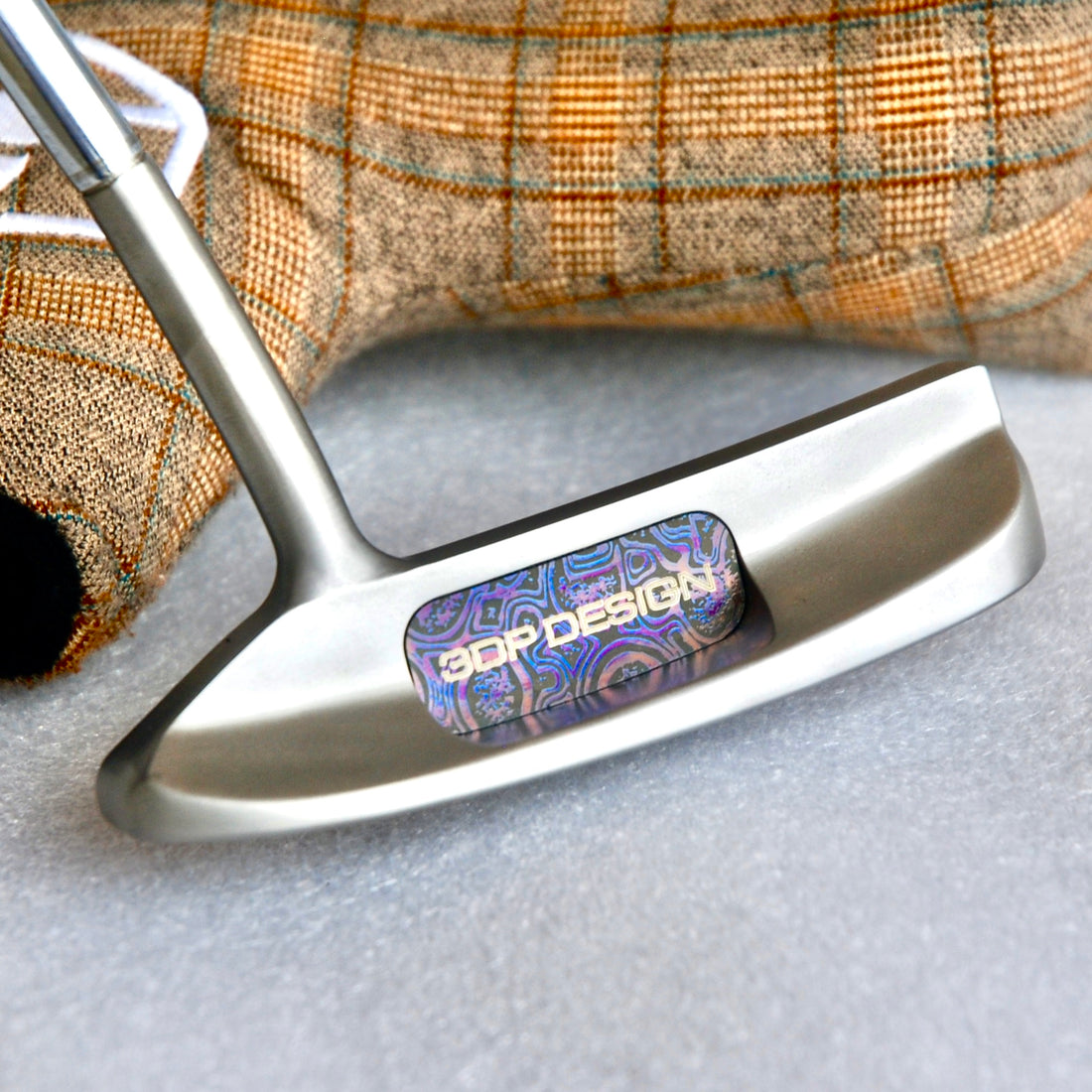
About our 3D Printed Putters
These are the real deal. 3d printed in 316 surgical stainless steel. Not just some 3d printed plastic piece glued into the middle of a cast putter. The steel bodies of these putters are 3d printed layer by layer with a laser melting layer after layer of powdered steel from the bottom up.
We started designing our first 3d printed putter in 2016. We’ve been selling printing putters since 2018. Developing new techniques. Mastering a new art. We’re proud to say that no one makes putters the way we do and it’s not just some cheesy tagline.
Why 3d print a putter? What makes these special?
First and foremost, 3d printing affords unparalleled design freedom. Milling and casting (the primary ways most putters are made) have limitations on what shapes and details they can make. More importantly, they are mostly limited to shaping the exterior of a part only. 3d printing has far fewer constraints and opens up a new world of possibilities. Most notably 3d printing allows a designer to shape the internal sections of a design where machinists would find it difficult or impossible to reach their tools. This expanded design freedom has driven our putter design philosophy - to use 3d printing to make a better putter. There’s no point in using 3d printing to just make a 3d printed version of a solid steel putter that can be made via milling or casting. But if you can use the advantages of 3d printing, and optimize the internal structures of a putter and deploy other materials like super heavy tungsten to boost the moi and forgiveness of a putter, you can make an objectively better putter out of the same putter shapes golfers know and love.
We’ve actually never made a 100% steel 3d printed putter. The bodies are 3d printed steel, but every putter we’ve ever printed has employed a multi-material design strategy internally to boost its moi, ensure the center of mass is perfectly positioned behind the center of the face, and improve its physical properties over what a similar milled or cast putter would be.
The other major advantage of 3d printing is that its cost structure is better suited for custom projects. Milling and casting have tremendous economies of scale - the more units of a part you make the cheaper the per unit cost. But they have very high setup costs and would be very expensive if used to make just a single, custom part. This is why you see very few milled putter makers producing actual one-off custom milled putters. Most “custom” milled putters are actually made in batches. A putter maker can mill a batch of putter heads that are 90% finished and then customize the final steps in the process (e.g. by welding a different style of neck on a putter or milling a different style of sight lines on it). If you were to contact one of these custom putter makers and ask them to make some original shape for you that you drew on a cocktail napkin, the likely response would be a flat “No”. If you managed to find one who would actually entertain the concept, the likely cost for such a project would be a small fortune.
3d printing a one-off true custom, on the other hand, is a very different proposition. It is by no means inexpensive. But the cost to make a single unit of a design is considerably lower than milling or casting. A CAD design needs to be prepared, but that’s the same case for a milled putter. After that, there are no additional setup costs. No CAM programming. No fixturing. The design is sent to the printer and it just prints the part. There is plenty of hand work after that to polish and assemble everything into a finished putter, but the actual fabrication of a 1 of 1 steel putter head via 3d printing is trivial compared to milling. People often knock CNC milling as just pushing a button over and over but that’s only the case after all the hard work of setting everything up and perfecting the first part is over. 3D printing skips all that hard work for that first part.
The flip side of this is that 3d printing is not cost competitive with milling or casting for large volume production runs. Which is why there are essentially no mass produced 3d printed putter models on the market. 3d printed putters are all about custom, 1 of 1 kind of projects. Because they require a lot of hand work and post-printing processing, we have a pretty small production capacity. We typically release only a few custom 3d printed project slots per month. But the level of customization and possible options are truly unparalleled in the putter industry. Even the most experienced putter collectors who have deep experience ordering custom pieces from other makers are blown away by the design freedom of a 3d printed putter project. Some clients event find the process a bit overwhelming since virtually everything is customizable and the options are truly limitless.
